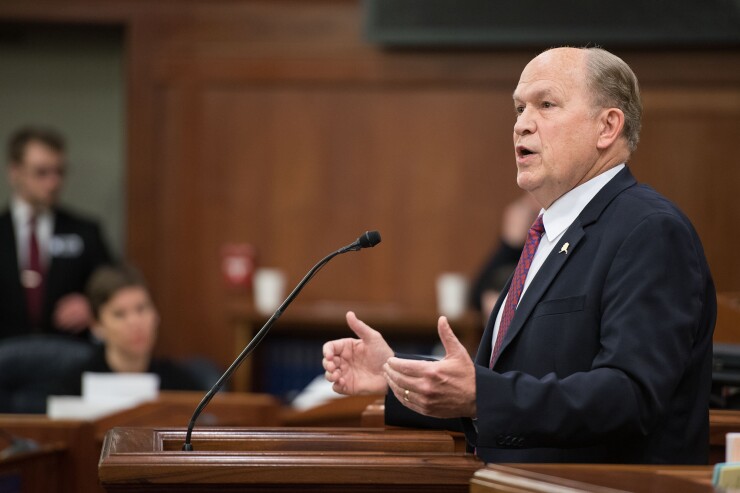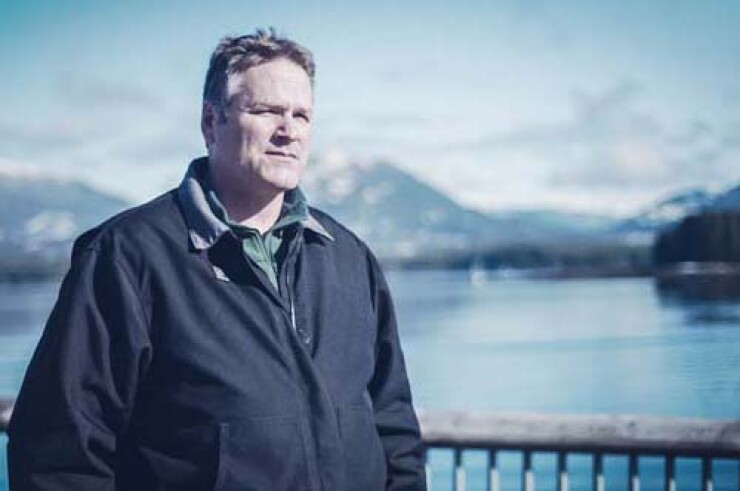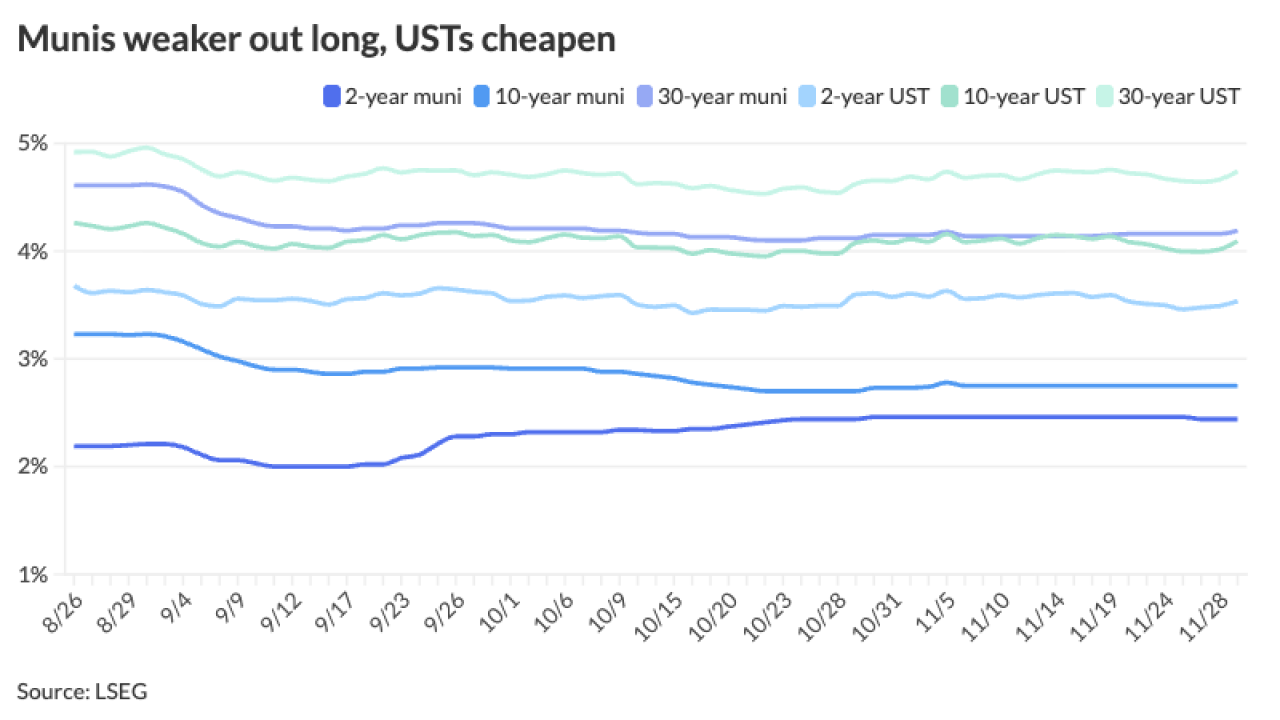An annual dividend payment to Alaska residents is a major issue in this year's race for governor.
Gov. Bill Walker, an independent, is facing challenges from Democrat Mark Begich, a former U.S. senator and mayor of Anchorage, and Republican Mike Dunleavy, a former state senator. Both major-party candidates have criticized Walker's changes to the Alaska Permanent Fund.

In 2016, Walker cut the amount disbursed to residents through the fund – an investment fund seeded with state oil and gas tax revenues – as part of his plan to reduce the state’s multibillion-dollar budget deficit.
The fund's principal is inviolable per the state constitution. Revenue from its earnings since 1982 have been used to send an annual dividend check to Alaska residents – free money that varied from year to year, topping out at $2,072 per man, woman and child in 2015. Alaskans pay no state income or sales tax.
In June, Walker signed a bill that lets the state government draw annually from the Permanent Fund to cover operating expenses while providing residents with a $1,600 annual dividend. The 2017 dividend was $1,100.
Walker has described the changes as necessary to protect the fund in the long term while getting the state’s budget, which has faced multibillion-dollar deficits over the last four years, under control.
“I reduced the PFD in 2017 so that the Legislature would find the courage to pass a fiscal plan compromise,” Walker said in a July op-ed in the Anchorage Daily News defending his decision. “That compromise has provided the stability that businesses need to invest in Alaska.”
Begich is proposing a constitutional amendment to protect the Permanent Fund, saying it shouldn’t be “subject to the whims of elected officials – today or in the future.”
Begich’s plan, outlined on his campaign website, would establish a formula where residents would get a $1,600 to $1,800 annual dividend while also providing a percentage to education.

“I believe my plan is the only plan that guarantees a sustainable PFD while also protecting the fund and its future from politicians down the line,” he said.
Dunleavy has called Walker’s action a breach of the public trust and said he would restore the dividend to the full amount before the cut.
“It was never broken, and does not need to be ‘fixed,’ ” he said in a statement on his campaign website.
Alaska political analyst Jerry McBeath, a professor emeritus of political science at the University of Alaska, Fairbanks, said the Permanent Fund decision was controversial and it’s not a surprise it’s become an issue in the governor’s race.
“It was an unpopular move because most Alaskans believe they are entitled to a Permanent Fund dividend,” he said. “They have an entitlement philosophy. When the entitlement is reduced, they hold responsible anybody who has reduced it.”
Walker has described himself as willing to make hard choices on fiscal matters. His state budgets – which have included deep cuts to the state’s universities – have reduced Alaska’s deficit from $3.7 billion to $700 million, according to the governor.
Earlier this year, S&P Global Ratings moved its outlook on Alaska's AA rating to stable from negative following the budget’s passage. It was the first positive news from a major credit agency since all three downgraded the state in 2015 due to falling oil prices and budget deficits. Fitch Ratings assigns Alaska its AA rating, and Moody's Investors Service rates the state Aa3. The ratings were triple-A across the board until 2015.
Walker called the S&P action a sign that “Alaska’s economy has turned a corner.”
Begich has said he believes the state can reduces expenses by modernizing and becoming more efficient. His plan includes moving from a one-year to two-year budget cycle and using more bond financing to pay infrastructure projects instead of cash.
Dunleavy has called for even more cuts, saying the state spends more per capita than any other state in the nation.

Forrest Nabors, a professor and chair of the political science department at University of Alaska, Anchorage, said of the three candidates Walker has focused the most on the state’s budget difficulties but it’s not an issue that has been as important to the electorate.
”In my view, the governor deserves credit for having the guts to try something different because he knows we need to change the basis of our state finances,” Nabors said.
One of the most pressing issues for voters in the campaign is the upswing in crime in the state although he doesn’t see major differences between the three candidates who all say they will do more to provide additional resources.
All three candidates also support further oil exploration in the state while Begich has staked out a position in support of a state ballot measure backed by fishers that would provide protection to salmon habitat.
The Cook Political report describes the race as a toss-up but both Nabors and McBeath believe Dunleavy is favored due to the state’s political makeup.
Alaska has an electorate with 54% nonpartisan registered voters, 27% Republicans and 15% Democrats. The state has generally voted Republican for major office-holders except in years where the party was fractured, McBeath said.
This year, Dunleavy appears to have unified Republican support while Walker and Begich will fight for Democrats and independents, both experts say.
“I believe it’s Dunleavy’s race to lose,” Nabors said. “Begich is going to split votes. He’s not going to soak up all the Democrats who are going to support Walker and, more importantly, independents.”
Walker is a former Republican who ran with Democratic support in 2014 and whose running mate for lieutenant governor is a Democrat. But his ability to hold the coalition of independents and Democrats who supported him last time is “in serious trouble” as his approval ratings have fallen to the mid-20% to 30% range, Nabors said.
Some Democrats called for Begich to drop out of the race, but he put an end to that speculation earlier this month declaring “I’m in the race to win” on the final day where he could remove his name from the ballot.
Nabors believes Begich or Walker can only win if one of them drops out. But with Walker’s poll numbers, Begich believes he has a better shot while Walker as an incumbent is not likely to pull out, he said.
“If you’re a Democrat this should frustrate you to no end,” Nabors said. “They should draw straws.”
McBeath said Walker and Begich both have an advantage in name recognition over Dunleavy, whose Alaska ties don't run as deep.
Dunleavy could also see some backlash over an independent political action committee his brother has contributed heavily to that has spent over a half-million dollars, McBeath said.
Walker or Begich may still have a chance to change the dynamics, he said.
“Alaska is a state with close elections,” he said. “One major factor one can’t forget is how much momentum develops in the campaign for each candidate.”





